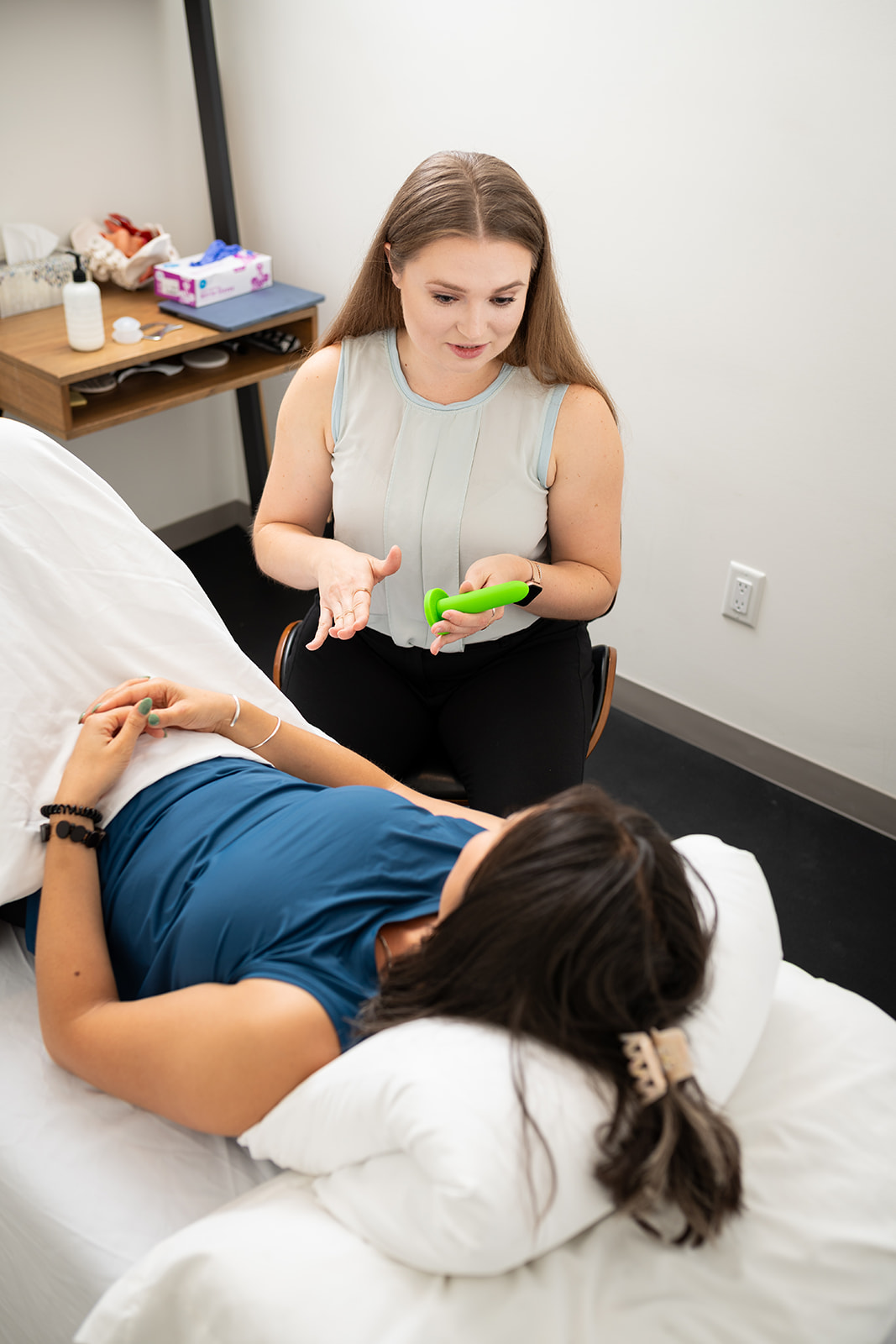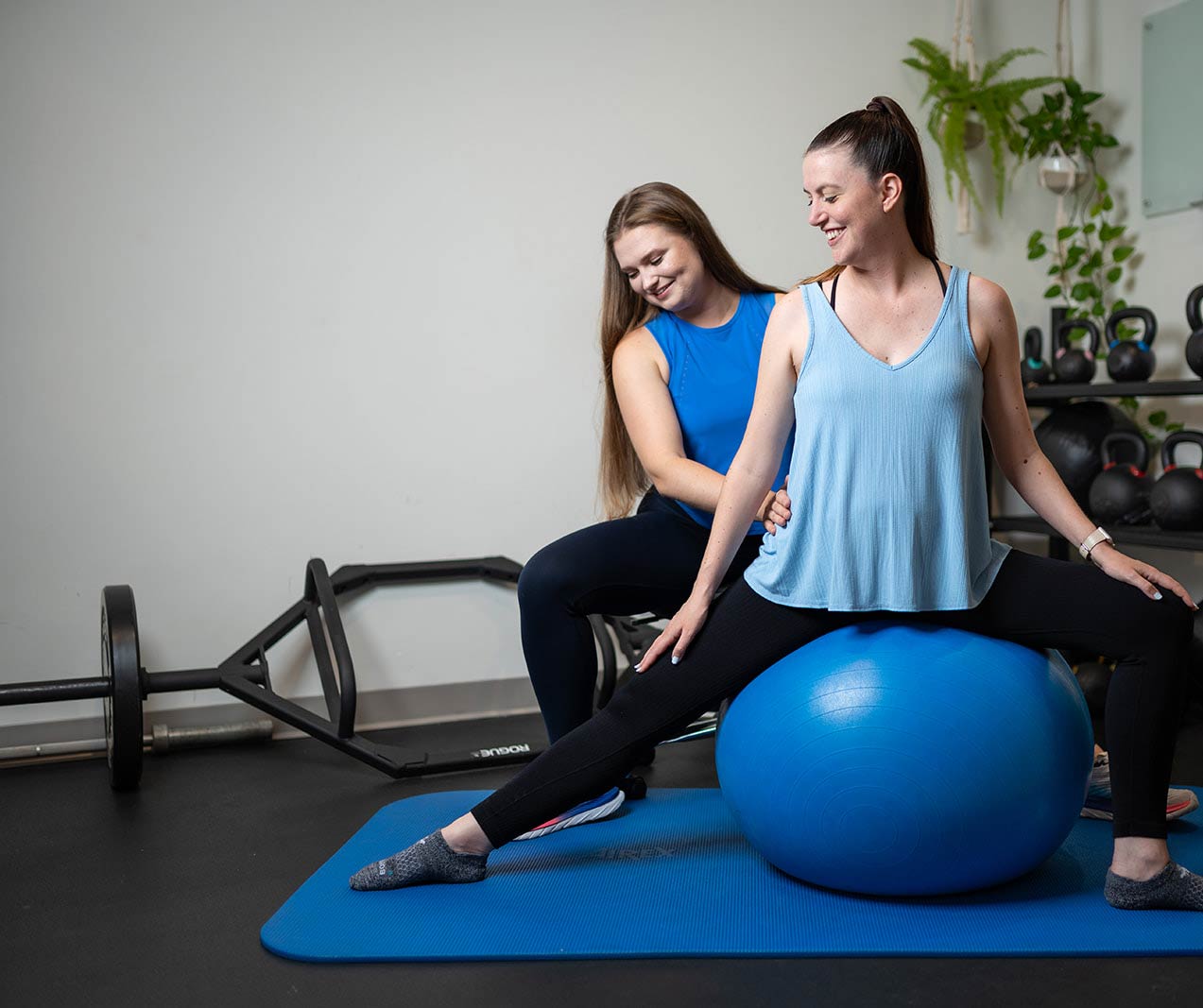Hello, new moms! Whether you are itching to get back into your HIIT classes or are preparing to keep up with your toddler, you won’t be a stranger to jumping into your postpartum recovery.
Read on to learn 5 tips on how to safely return to jumping post-baby.
1. Reconnect With Your Body
As a new mom, your focus will be on your newborn, balancing work, and relationships with your partners and friends/family.
And then … there’s you!
You’ll be tempted to put yourself on the back burner and ignore how your body is feeling until you try something new (like a HIIT class or run).
But you just went through so much change during pregnancy and postpartum — it’s important to make time for yourself and get reacquainted with your body, especially as you start returning to physical activity.
Recovery is a continuous process. It’s common to have pelvic pain, spotting, heaviness, and leaking immediately postpartum, but those symptoms should resolve over time. (I repeat, just because you had a baby, doesn’t mean you are condemned to a lifetime of pain, leaking, heaviness, or spotting).
Sneezing shouldn’t be scary and nor should jumping! However, it can take practice to build awareness of what’s going on with your body. I recommend developing that skill before you return to physical activity.
A good place to start would be to ask yourself:
- Which of these symptoms do I experience?
- Is it consistent throughout the day or does it get worse in the evening?
- Are there any day-to-day activities that increase these symptoms?
By performing these check-ins a few times a day, you’ll strengthen the connection you have with your body and will be able to monitor for these symptoms as you begin more demanding forms of exercise.
Note: If you do notice spotting, leaking, heaviness, or pain once you start running or jumping (especially if those symptoms are already resolved for you otherwise), then that’s an indication that you may be overdoing it a little.
Before you return to jumping, be sure you can walk for 30 minutes and jog in place for 1 minute without developing any pelvic pain, heaviness, spotting, or leaking.
2. Hone in Your Breathing
During pregnancy, it’s common to develop changes in your posture to adapt to your growing baby. However, after delivery, your posture isn’t going to revert right away — it’s something you have to work toward.
A common place for posture changes to develop is in your torso — flattening through your lower back to accommodate for the growing baby and a rib flare when your ribs are in an outward and elevated position. These are changes we see in clinic to many of our clients postpartum. It’s normal, but it can cause a variety of symptoms.
How does this affect breathing, you may ask? As we inhale, our ribs rotate up and out (like bucket handles), which increases the volume in our torso to get more air into the lungs. If our ribs start in an ‘up and out’ position, then they can’t expand further, which results in a more shallow inhale.
Jumping is a high-impact activity that requires the body to process a lot of force. It requires good breath control to keep up with the oxygen demand of the activity and manage the pressure in your abdomen to protect your pelvic floor.
Before you return to jumping, practice taking deep belly breaths and expanding into the abdomen and the sides of the body. Start doing this while lying down. Then progress to doing them in sitting, standing, and lastly while moving around.
In the video below, our very own Dr. Juliana Galante-Wiegman, PT, DPT, PCES, CSCS, offers some postpartum breathing tips that can help you get back to jumping and exercising in general:
Practicing breathing will also help once you start jumping. Focusing on your exhale when you land will help prepare the pelvic floor muscles and core, which helps support your body as it braces for the impact of landing the jump.
3. Work on Strength
There are 3 areas of strength in the body that I look at as a pelvic health physical therapist when it comes to returning to high-impact activities:
- Core
- Hips
- Pelvic floor
All of these muscle groups work together to provide support and stability. By having adequate strength in all 3 areas, your risk of injury decreases.
Try this mini-assessment for yourself.
Core:
- Hold a plank for 1 minute
- Hold a side plank for 30 seconds on each side
Hips:
- 20 single-leg glute bridges on each side
- 20 single-leg hip abduction on each side
- 20 single-leg squats on each side
- 20 single-leg heel raises on each side
Pelvic floor:
- Full contraction (circumferential squeeze and lift) and relaxation (lengthening and opening)
- 10-second kegel endurance hold in the lifted and squeeze position
If you found this mini-assessment to be challenging or you developed any pelvic symptoms, consider working with a pelvic health physical therapist to help get you ready for high-impact activities. Book a free discovery call with me today!
4. Perform Pre-Jump Exercises
Before you start jumping, test the waters. Implement exercises that gradually increase the impact on your body to see how your body responds.
Some examples of exercises include:
- Standing marches
- Reverse lunges
- Lateral lunges
- Walking down stairs
- Heel rises to squats (making sure you lower down quickly to mimic landing a jump)
Check out our recent reel to see some of these exercises:
5. Ease into Jumping
Finally, we are ready to jump!
Start by jumping on 2 feet in place.
If you are symptom-free, then progress by switching directions — going forward, backward, side to side.
Then, experiment with landing on one foot. This will help mimic the demands of running.
Finally, play around with jumping on and off different heights. This will help to cause more pressure on your pelvic floor and core and prep your body to sustain greater impact forces.
Check out this video as I go through 10 levels of jumping, which increase in difficulty with each level!
*Extra Tip: Work with a Pelvic Health Physical Therapist
You are already mentally managing a lot with the addition of your newborn. Take the guesswork out of your recovery by having a physical therapist evaluate your strength and mobility, listen to your goals, create a personalized plan to meet those goals, and guide you every step of the way.
If this sounds great to you, book a discovery call with me. We’ll get you moving in no time!
Let’s jump with joy together!
Dr. Vera





